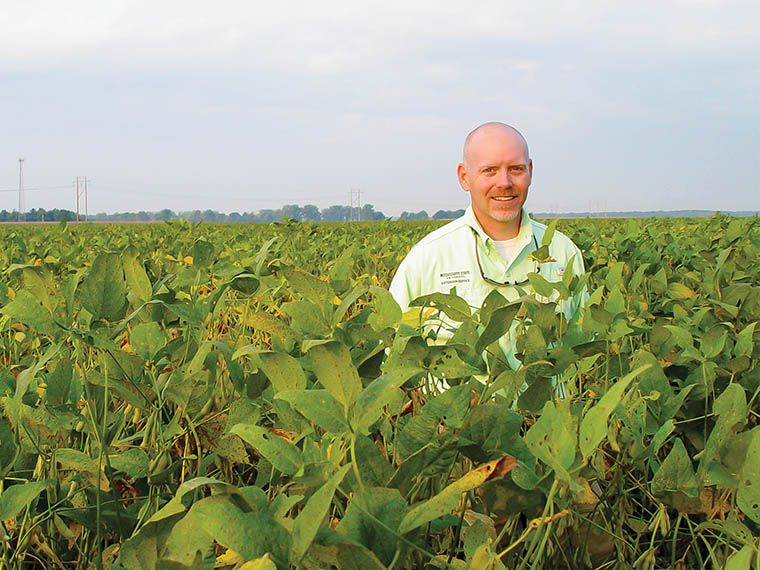The information presented on this page may be dated. It may refer to situations which have changed or people who are no longer affiliated with the university. It is archived as part of Mississippi State University's history.
Current Research
I have several graduate students conducting research projects. Research includes determining thresholds, evaluating drought stress, improving irrigation application efficiency, evaluating tools like surge valves, soil moisture sensors, and polyacrylamide gels and management practices, such as herbicide programs for low-water use, tillage practices and cover crops. While our focus is furrow-irrigation, the most common irrigation system in the Delta, much of our research translates to center pivot irrigation.
Name A Specific Time When Your Research Was Applied
Surge valves have been around a long time but were not widely used in Mississippi. Our evaluation of surge valves showed producers the technology improved irrigation application efficiency by 20 to 25 percent.
How Did The Research Benefit Producers?
That 25 percent savings in water and fuel consumption translated to saving producers approximately $10 per acre.
Provide An Example Of A Great Partnership
Industry partners like Monsanto, Syngenta, Bayer, are very supportive in providing funding to help answer basic questions in irrigation. Sometimes they help fund graduate students or the resources needed to conduct the science. We also collaborate with producers to conduct on-farm research.
How Does Your Research Help Inform Your Extension Role And Vice Versa?
Research and extension are inseparable. I think back to George Washington Carver; in the old days people didn't see a distinction between research and extension. They conducted research they hoped farmers could immediately adopt and apply. We seek out projects within a three- to five-year window with the hope of solving problems that will help producers today. When we hit on something with potential, our goal is to roll out on the farm scale as soon as possible.
We seek out projects within a three to five year window with the hope of solving problems that will help producers today. When we hit on something with potential, our goal is to roll out on the farm scale as soon as possible.

